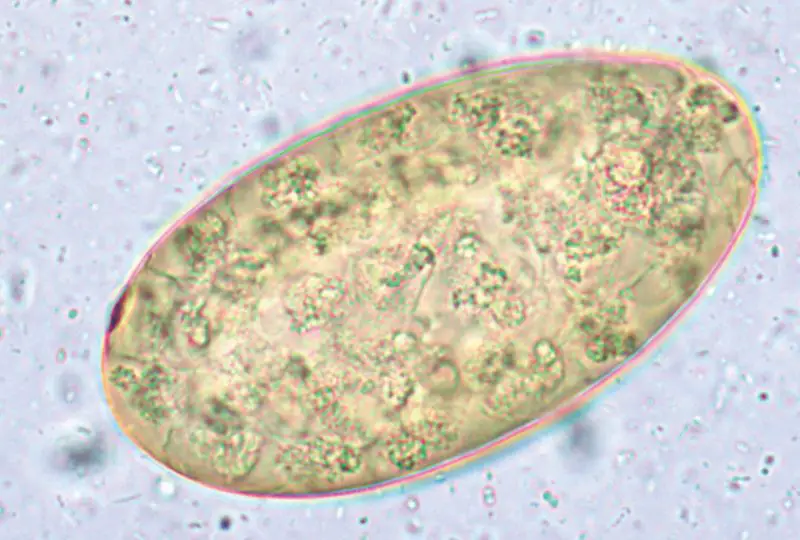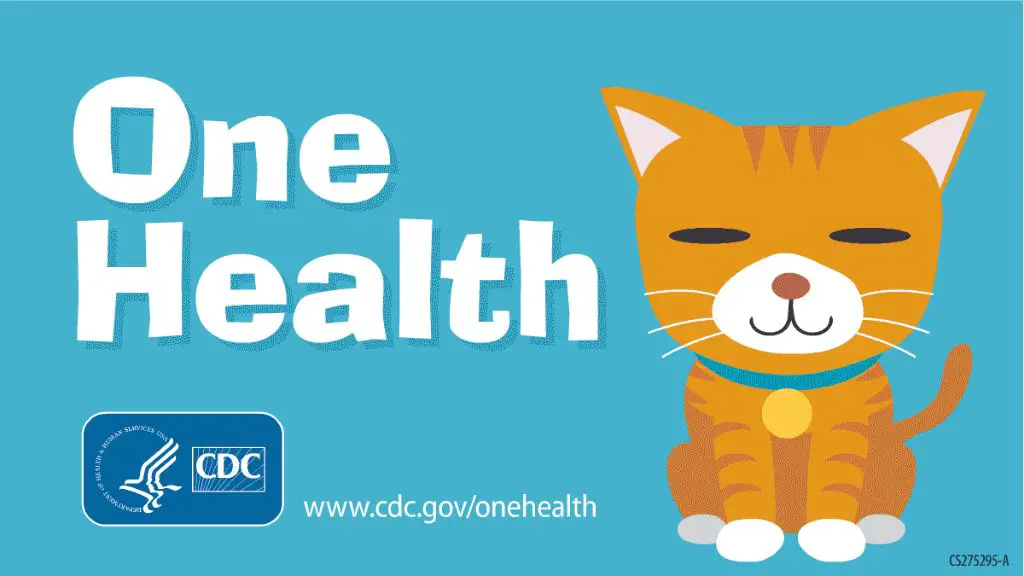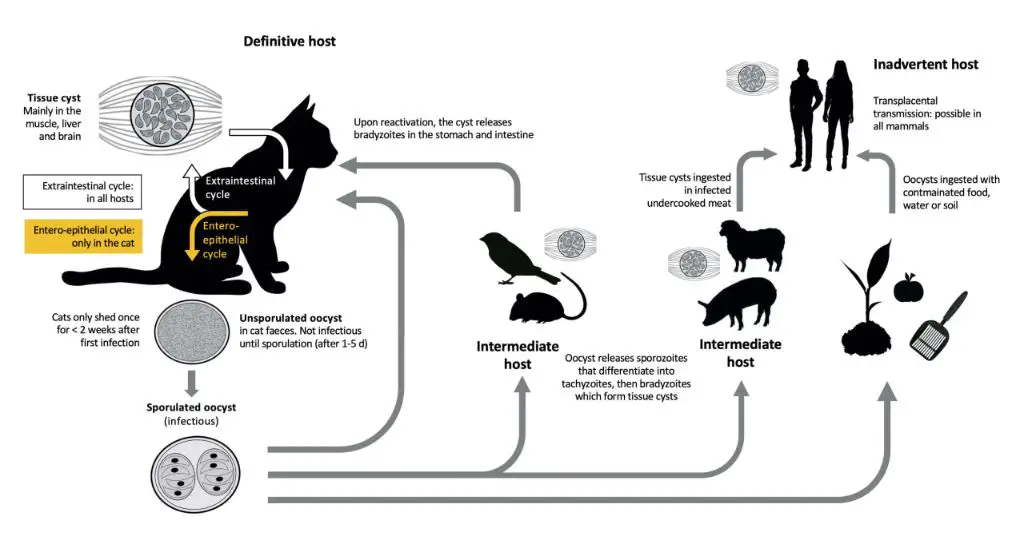Many people consider their pets as members of the family. In the United States alone, 70 million households own at least one pet. With the close physical contact we share with our furry friends, it’s natural to wonder if certain parasites can be transmitted between pets and their owners.

Pets like cats and dogs can carry parasites like roundworms, hookworms, and protozoa. While some of these parasites live harmlessly in a pet’s intestines, others have the potential to cause disease in humans. This is known as a zoonotic disease.
In this article, we will explore some of the most common intestinal parasites found in cats, how they are transmitted to humans, associated illness, diagnosis, treatment, and steps you can take to reduce risk of transmission.
Common Parasites in Cats
There are several common parasites that can infect cats. Some of the most prevalent include:

Toxoplasma gondii
Toxoplasma gondii is a microscopic parasite that can infect cats and other mammals, including humans. Cats become infected by ingesting tissue cysts in undercooked meat or contaminated food or water. An infected cat sheds this parasite in its feces for approximately 1-3 weeks. The parasite then becomes infectious after 24 hours in the environment. Human infection, also called toxoplasmosis, is very common and usually causes no symptoms in healthy adults. However, it can cause severe illness in immunocompromised individuals and pregnant women. It is estimated that over 60 million people in the United States may be infected with T. gondii.
Hookworms
Hookworms are intestinal parasites that attach to the intestinal wall and feed on the cat’s blood. Kittens usually get infected from their mother’s milk. Symptoms include diarrhea, vomiting and weight loss. Hookworms are spread through contaminated soil or feces. They can also infect humans through direct contact with contaminated soil, causing skin rashes.
Roundworms
Roundworms are long, spaghetti-like worms that live in the cat’s intestines. Kittens usually get roundworms from their mother. Infected cats shed roundworm eggs in their feces, contaminating soil. Humans, particularly children, can get infected by accidentally ingesting infected soil. In humans, roundworm infection may cause vision loss, cough, fever and abdominal pain.
Tapeworms
Tapeworms live in the cat’s intestines and shed segments containing eggs which pass out in the feces and contaminate the environment. Cats get tapeworms by ingesting infected fleas. Humans may get infected by accidentally swallowing infected fleas. Tapeworm infections usually don’t cause symptoms in humans.
Transmission to Humans
One of the most common ways that parasites from cats can infect humans is through the fecal-oral route. This means that tiny parasite eggs from an infected cat’s feces can be ingested by humans, leading to infection. Exposure often occurs when cleaning out a litter box that contains feces from an infected cat. The Cornell Feline Health Center notes that toxoplasma parasite eggs can survive in the environment for long periods of time and may accidentally be ingested during litter box cleaning if proper precautions are not taken.
When cleaning a litter box, it’s important to wear gloves and wash hands thoroughly afterwards to avoid ingesting any parasite eggs that may be present in the cat feces. The eggs can stick to surfaces, hands, and gloves and be easily transmitted by mouth to humans, leading to infection. Pregnant women should avoid cleaning litter boxes entirely due to the risk of toxoplasmosis infection to the fetus. The main way to prevent fecal-oral transmission of cat parasites to humans is through proper handling and disposal of cat feces, especially from the litter box.
Toxoplasmosis

Toxoplasmosis is caused by the parasite Toxoplasma gondii, and is one of the most common parasitic infections worldwide. According to the CDC, there are an estimated over 40 million people infected in the U.S. alone1. Cats are the only known definitive host for T. gondii where the parasite can complete its life cycle. However, many different animals can become infected and act as intermediate hosts.
In humans, toxoplasmosis is usually a mild flu-like illness that goes away on its own. Symptoms may include swollen lymph nodes, muscle aches, headache, and fatigue. For most healthy people, there are usually no symptoms at all2. However, severe complications can occur in those with weakened immune systems like people with HIV/AIDS, cancer patients, and organ transplant recipients. The parasite can reactivate and cause damage to the brain, eyes, or other organs.
One of the most serious complications is congenital toxoplasmosis, which occurs when a mother passes the infection to her unborn baby. This could lead to miscarriage, stillbirth, or babies born with visual or hearing impairments, mental disabilities, or other health problems1.
Prevention
There are several key ways cat owners can help prevent the transmission of parasites between cats and humans:

Veterinary care and deworming are crucial. Cats should have regular veterinary checkups at least once a year, which include screening for parasites through fecal tests. Vets can prescribe broad-spectrum dewormers to eliminate intestinal parasites.
Proper hygiene is also important. Litter boxes should be scooped daily and fully cleaned out once a week using soap and hot water. Hands should always be washed after handling cats, litter boxes, or anything that may have come into contact with feces.
Cat owners should avoid contact with cat feces as much as possible. Use gloves when cleaning the litter box and wash hands immediately after. Dispose of feces from the litter box promptly.
Lastly, the litter box itself should be kept clean. Scooping out waste daily and fully changing the litter weekly helps remove parasite eggs before they can develop into infectious stages. Keeping cats indoors also limits their exposure to outdoor parasites.
With proper veterinary care, hygiene, and precautions, cat owners can significantly reduce the risk of contracting parasites from their pets.
Diagnosis in Humans
Toxoplasmosis is typically diagnosed through a combination of blood tests and stool sample testing. According to the CDC, blood tests can detect antibodies produced by the immune system in response to a T. gondii infection [1]. The most common blood tests look for immunoglobulin G (IgG) and immunoglobulin M (IgM) antibodies. An IgG test determines if a person has ever been infected, while an IgM test reveals a recent infection within the past several months.
In addition to blood tests, stool samples may be analyzed to detect the presence of T. gondii parasites. This helps confirm an active intestinal infection. Polymerase chain reaction (PCR) testing of cerebrospinal fluid is also sometimes performed in cases of suspected neurological toxoplasmosis [2]. Overall, a combination of blood antibody tests and stool analysis allows physicians to diagnose a T. gondii infection and determine whether it is a past, active, or recent infection.
Treatment
Treatment for toxoplasmosis involves taking antiparasitic medications to stop the parasite from reproducing and spreading. According to the CDC, common medications prescribed include pyrimethamine and sulfadiazine taken together with folinic acid for 4-6 weeks. These medications stop the parasite from multiplying and eventually eliminate it from the body.
Along with antiparasitic medications, doctors may prescribe corticosteroids like prednisone to reduce inflammation caused by the infection. Pain medications can help manage headaches and muscle pains. If toxoplasmosis affects the eyes, steroid eye drops may be prescribed to reduce inflammation. Patients are advised to rest, drink fluids, and eat nutritious food to help regain strength.
Risk Factors
Certain groups of people are at higher risk of developing severe toxoplasmosis infection:
- Pregnant women – Toxoplasmosis can cause miscarriage, premature delivery, and severe illness in newborns. Pregnant women should avoid exposure to cat feces by avoiding cleaning litter boxes and wearing gloves when gardening where cats may have defecated. [1]
- People with weakened immune systems – Those with HIV/AIDS, organ transplants, or cancer are at risk for severe toxoplasmosis infection affecting the brain, eyes, or other organs. They should take precautions to avoid exposure. [2]
- Young children – Their still-developing immune systems make them more susceptible to severe infection. Parents should supervise handwashing after contact with cats. [3]
- People who handle cat litter boxes – Cat feces should be changed daily, since the parasite doesn’t become infectious until 1-5 days after excretion. Wearing gloves, washing hands, and cleaning with boiling or ammonia-based disinfectants reduces risk. [3]
Prevalence Data
According to the CDC, it is estimated that 11% of the population 6 years and older in the United States have been infected with Toxoplasma (https://www.cdc.gov/parasites/toxoplasmosis/epi.html). Approximately 22.5% of the U.S. population 12 years and older have Toxoplasma antibodies, indicating a past infection (Understanding Toxoplasmosis in the United States, Lykins et al, 2016).

One study found that cat owners were more likely to test positive for Toxoplasma antibodies, with rates of 28-48% compared to 11-23% in non-cat owners (Understanding Toxoplasmosis in the United States, Lykins et al, 2016). However, owning a cat does not guarantee infection, as proper hygiene and prevention measures can reduce the risk of transmission.
Conclusion
In summary, there are a few common parasites that can be transmitted from cats to humans, with toxoplasmosis being the most concerning. While the infection is usually mild or asymptomatic in healthy adults, it can cause serious complications in pregnant women, newborns, and immunocompromised individuals.
The key takeaways are to practice good hygiene when handling cats, properly cook meat, wash vegetables, avoid cleaning the litter box when pregnant, and get cats routinely tested and dewormed. If you are concerned about a potential infection, see your doctor for a diagnosis and appropriate treatment.
For more information, consult your veterinarian and doctor. There are also educational resources available from health organizations like the CDC and authoritative pet care sites that provide trustworthy information on reducing parasitic infections in both cats and humans.

